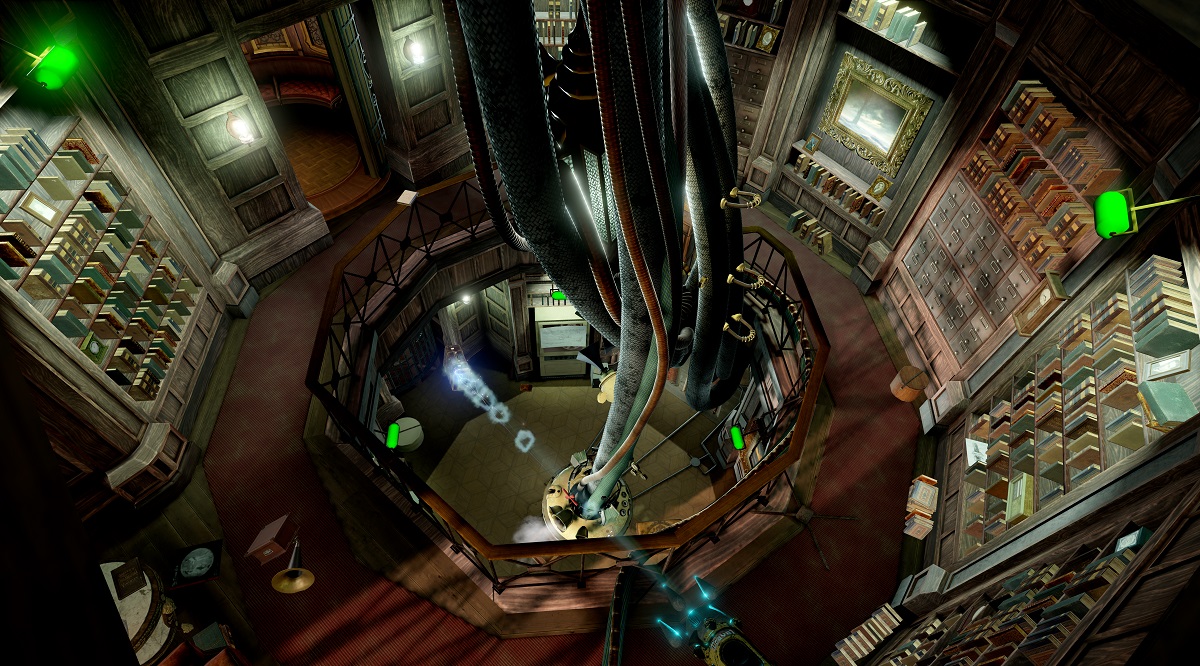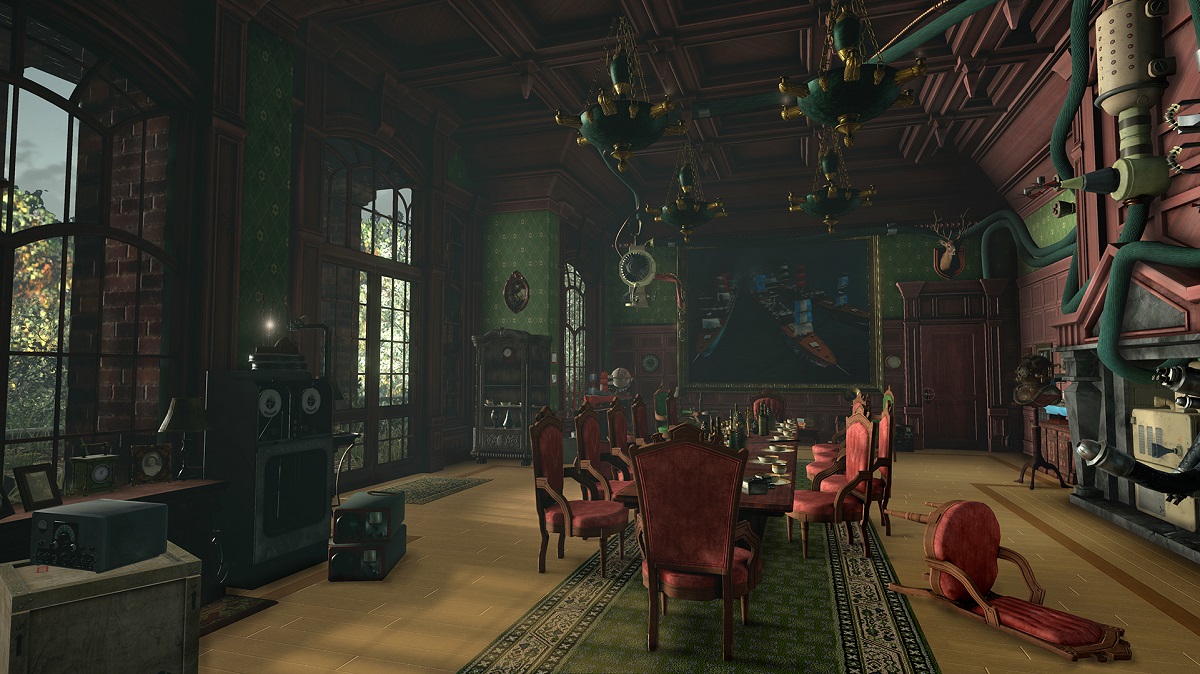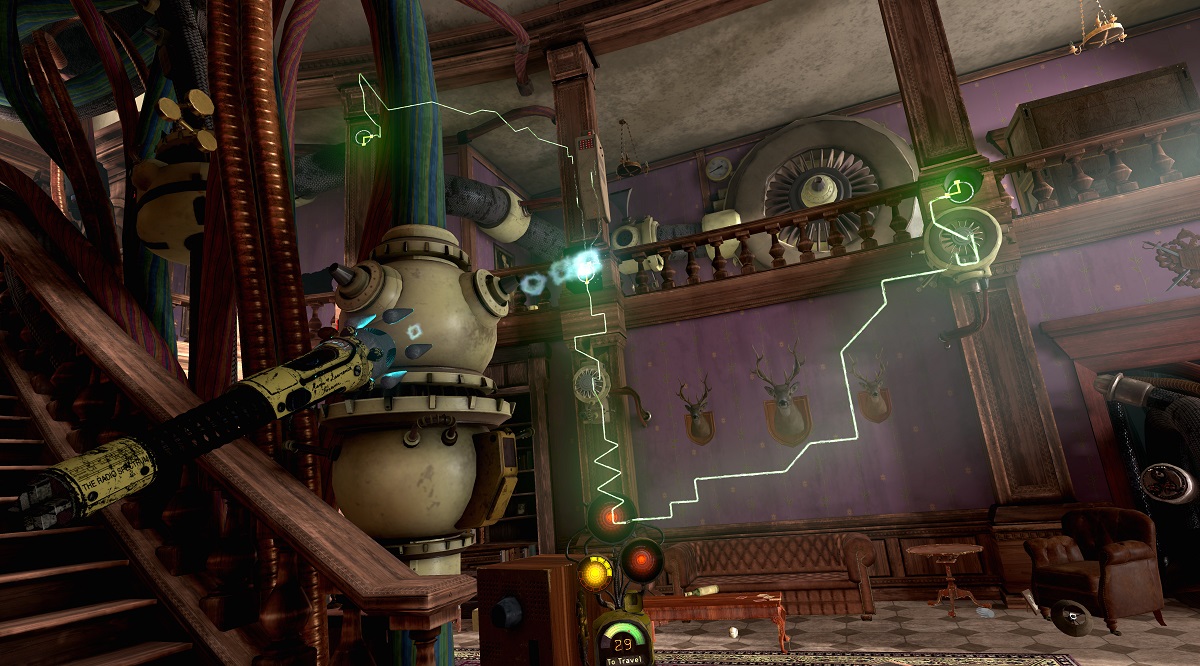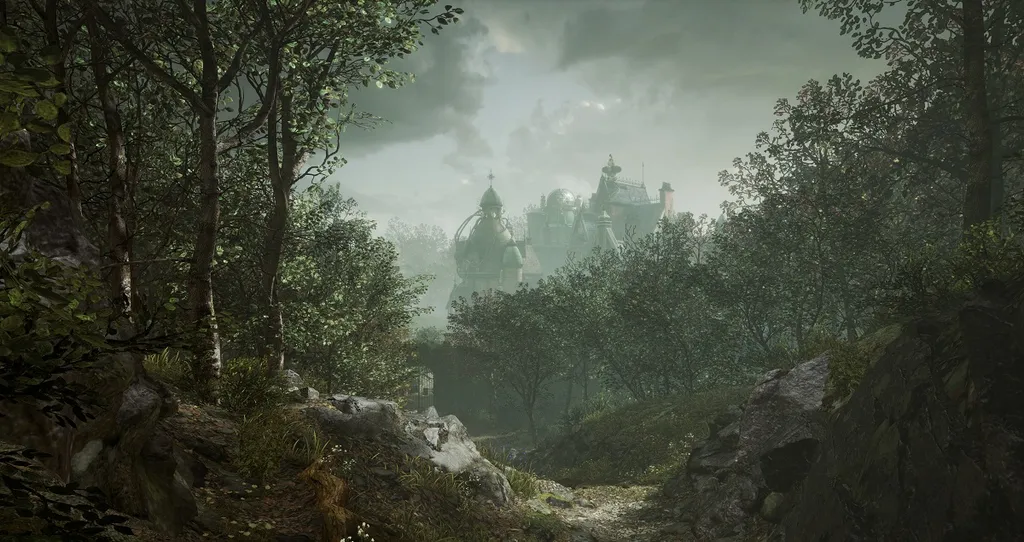When we pulled back the curtain on Torn, an upcoming VR thriller from Austin, TX-based Aspyr Media that channels the likes of Myst, Black Mirror, and The Twilight Zone as sources of inspiration, we were left with more questions than answers. From what we’ve seen the world looks beautifully detailed and the production values are much higher than most other VR titles — but what is Torn? What do you do in the game? Who are you?
To get answers to these, and many other questions, we had an in-depth interview with Neill Glancy, writer and creative director on Torn for Aspyr.
In Torn players will take on the role of Catherine Patterson, a video blogger, as she sets out to look for abandoned spaces for her web series. The most popular locations are old lunatic asylums, rundown hospitals, vacant churches, and similar locations. During a hike in Vermont, she comes across the mansion featured in the reveal trailer tucked away in a dense forest, which kicks off the main story in Torn. For all intents and purposes, the mansion is just as much a central character as Catherine is.
“When she runs across the mansion, it’s obvious there is something odd going on here,” explains Glancy. “There are lots of crazy, tentacle-like cables, almost like a machine is trying to break out of the house. So she decides to gain access to the building.”
It all has a very strong Myst-like vibe going for it, which is expectedly intentional. Aspyr wears that inspiration on their sleeve, which has a bit of charming demeanor in a way, especially since we’ve seen the direction Myst’s own creators are going in VR with the likes of Obduction and the upcoming Firmament.

“These machines are clearly not modern technology,” continues Glancy. “Whoever was making this stuff must have been doing it at the advent of modern technology, Catherine thinks, a very long time ago. There’s a lot of Willy Wonka-esque machines everywhere, cut up holes in the floor for the wires to run through. It’s all very bizarre.”
Judging from the trailer above it also gave off a very distinct Lemony Snicket vibe as well, or even a steampunk-ified Addams Family house tone.
The tricky thing about designing games like this though isn’t so much nailing an art style or vibe, but being able to establish that locations are living and breathing areas. All too often in games there is this feeling that, if the player weren’t there, then the world would cease to exist. That it’s purely reactive to the player’s presence and not self-sufficient at all. There needs to be an illusion of persistence even though a digital world doesn’t exist if the computer or game console turns off.

“We wanted the mansion to feel like a real place that’s full of real things,” says Glancy. “A big goal for us was a very heavy physics integration system. We needed it to be this place that you can interact with so much that it becomes a sandbox. It should feel like you can do whatever you want.”
Despite all of the amazing VR worlds developers have created for us in the past two years, we haven’t seen one nail that believable sense of physics and presence in a large environment. Games the size of Skyrim VR are great, but they have a lot of rough edges in terms of VR implementation. The ones that feel amazing to play, like Job Simulator, are tiny microcosms of a larger world.
Torn isn’t going to be an RPG on the scale of Skyrim, but it’s certainly a more explorable environment than a kitchen from Job Simulator. The physics system will enable players to interact with thousands upon thousands of objects in real-time in the environment around them. This type of interaction is going to be important to solve all of the puzzles spread across the mansion.
One of the key ways players can do that in Torn will be through the use of a Half-Life 2-esque gravity tool, which you can see in some of the screenshots and in the trailer. As a game mechanic it helps circumvent players’ inability to move around endlessly and reach all stretches of the world physically while also feeling like an excellent extension of the universe’s premise. A lot of the physics ideas were inspired by this Nvidia tech demo:
One of the examples Glancy talks about is liquid. Unlike in most games that try to create the illusion of digital liquid, they’ve actually managed to craft a “real” lifelike simulation.
“This is the real deal,” says Glancy. “It’s a true, fluid simulation at an atomic level. What we have is liquid in most every sense.”
It doesn’t sound like a big deal, but those seemingly minor details are the make or break points for immersion. It’s the same reason Owlchemy Labs spent over 800 hours making a cup of coffee work in Job Simulator. When I’m playing The Gallery, I get lost in that world because of how thorough and consistent the design is. If Torn can capture that same feeling of awe, mixed with believable real world things like realistic liquid and responsive physics, the developers at Aspyr may really be onto something here.

“As a player in the world of Torn, a big part of the fantasy is going to be peeling back the onion layers and getting to the heart of what’s really going on,” concludes Glancy. “The house has always been alive and was always here, you just happen to be the one walking in it right now.”
Torn doesn’t have a clear release date yet, but is scheduled to come to PSVR, Rift, and Vive this year. Let us know what you think of the game so far down in the comments below!


























